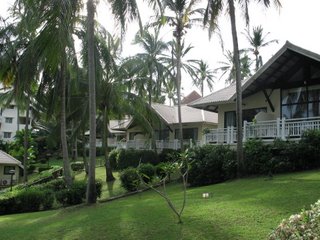In 1935, the French initiated the Appellation d'Origine Contrôlée (AC or AOC) system as a way of protecting winemakers, vineyards, and areas from unscrupulous producers who were taking advantage of the better-known names in that country. Although the French AC system can't guarantee the quality of wine, it can control most of the elements that go into making it. This is achieved by applying strict criteria necessary for qualifying as an AC.
These criteria involve the following categories:
- Geographic limits of the production area
- Density of planting
- Pruning style and standards
- Yield per hectare
- Mandatory tasting by a certification panel
- Allowed grape varieties
- Minimum alcohol levels
- Trellis systems
- Vineyard practices
- Winemaking techniques
- Laboratory analysis standards
Wines that meet these criteria are allowed to use the phrase Appellation Contrôlée on their labels while those not following these regulations are prevented from using AC status.
Multiple AC’s can exist within a geographic area of a larger AC. For example, the Pauillac AC is within the Haut-Medoc AC which in turn is within the Bordeaux AC.
The categories below Appellation d'Origine Contrôlée in descending order of quality are vin délimité de qualité supérieure, vin de pays and vin de table.
This ‘French System’ is in place in some form in other countries but so far none seem to be as successful. These include the AVA in the USA, the DOC in Italy, the DOC in Portugal and the DO in Spain.

In Australia we have the GI or Geographic Indication system. A Geographical Indication is an official description of an Australian wine zone, region or sub-region designed to protect the use of the regional name under international law. A GI is similar to the Appellation naming system used in Europe but less restrictive in terms of viticultural and winemaking practices. In fact the only restriction is that wine which carries the GI must include at least 85% fruit from that region.
A zone is an area of land, without any particular qualifying attributes.
A region must be a single tract of land, comprising at least five independently owned wine grape vineyards of at least five hectares each and usually producing five hundred tonnes of wine grapes in a year. A region is required to be measurably discrete from adjoining regions and have measurable homogeneity in grape growing attributes over its area.
A sub-region also must be a single tract of land, comprising at least five independently owned wine grape vineyards of at least five hectares each and usually produce five hundred tonnes of wine grapes in a year. However, a sub-region is required to be substantially discrete within the region and have substantial homogeneity in grape growing attributes over the area.

Our Shoalhaven Coast Wine Region lies in the South Wine Zone a position we share with the Southern Highlands Wine Region to the west. The two areas are climatically different. The Shoalhaven Coast experiences a warm maritime climate while the Southern Highlands is more cool moderately continental due to its higher altitude and distance from the coast. So although in general the same grape varieties are grown in both regions , the wines produced from them can be completely different.




















1 comment:
Hold on, let me get another glass of wine so I can re-read this and maybe I'll get it. Ha Ha! Great information most of us amateurs don't know. Thanks.
Post a Comment